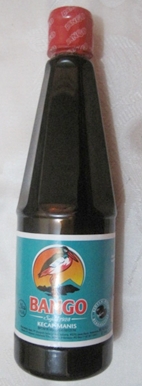
As the capital city, Jakarta is now almost five centuries old but still growing (painfully) while modernizing itself. It is certainly not one of the best places in the world, but if you ask any Jakarta true believer if he or she would like to live elsewhere, you can be sure the reply would be an emphatic no.
Jakarta city, warts and all, does have its charms not found elsewhere. And one of its charms is the authentic Betawi cuisine. The authentic Betawi (=Jakarta) cuisine created by the city’s longtime native residents, is especially famous for it bold flavor combinations.
The name Betawi originally came from Batavian in Dutch for ethnic group in capital city now known as Jakarta. One of the most popular dishes in this City is Soto Betawi.
Soto, which is a generic term for a variety of Indonesian soups, can be found in just about every area in the city. Unlike the other types of soto (=soup) which usually have clear or transparent broth, Soto Betawi is a creamy beef soup consists of a tasty beef broth enriched with coconut milk and a combination of herbs and spices.
picture from sotobetawi.com
If you are very adventurous when it comes to culinary treats, this soup can also be served with offal.
What is so special about this soup? It is the richness of its flavor........ You can check the ingredients list... there are cinnamon (stick), coriander, cumin, ginger, kaffir lime leaves, nutmeg, plus garlic and shallots. The nice combination of herbs, spices, coconut milk, beef and tomato will produce a soup-dish which has very deep of flavor.
Coconut is perhaps the most versatile of this soup, it harmonizes all the flavors. That's not the end... you still need sweet soy sauce (kecap manis), lime juice, melinjo nut crackers (emping) and chili sambal as the companion to serve the soup.
Due to its hearty, satisfying taste, Soto Betawi is a popular Soup in the City particularly as lunch meal. Even though I’m not a native Betawi, I love this dish. And the best Soto Betawi I’ve ever tasted is 'Soto Betawi Babe' located in Kelapa Gading area, northeast Jakarta.
Last week end, I was craving for Soto Betawi but I didn't feel like going all the way from the southeast (where I live) to northeast of Jakarta to have it. So I grabbed one of my cooking books and looked for the recipe of Soto Betawi. My craving for this special soup was the perfect motivation to try cooking it myself.
I remember that according to one famous Soto Betawi seller, the most important element in Soto Betawi is the broth. No matter what [meat] you put inside, if your broth is not delicious, then you will not cook the perfect Soto Betawi. To produce the right broth for Soto Betawi, you need to cook the coconut and beef stock together just right.
Here's my version of the Step-by-Step "Soto Betawi"
Ingredients :
- 500 gram beef
- 500 ml of water
- 5 cm cinnamon stick
- 1/2 nutmeg, bruised
- 3 kaffir lime leaves
- 250 ml coconut milk
- 2 spring onions, sliced finely
- 2 tomatoes, take out the seeds, cut into small wedges

- 3 tablespoons fried shallots
- 1 lime, sliced
- 100 g fried Emping (Melinjo Nut crakers)

Ingredients for the Spice Paste
- 3 cloves garlic
- 6 shallots
- 2 cm fresh ginger, chopped
- 2 cm galangal, chopped
- 1/2 tablespoon cilantro or coriander leaves
- 2 teaspoons peppercorns
- 1 teaspoon coriander seeds, roasted
- 3 candle nuts, roasted
- 1/2 cumin powder (I skip this because my family don't like cumin)
- 1/2 teaspoon turmeric powder
- 10 red bird eye chilli, boiled
- salt

How to cook the Meat:
- Cut the beef into small cubes (around 2 com)
- Cook the meat cubes in water until they change color and become tender
- Remove the beef cubes from the stock; set aside the beef stock (around 250 ml) to be used for the soup
- Season the boiled beef cubes with beef powder seasoning
- Fry the beef in cooking oil for around 10 minutes

How to cook the Soto (Soup):
- Heat the oil and saute the spice paste until fragrant.
- Add the cinnamon stick, nutmeg, kaffir lime leaves and salam leaves.

- Add the stock , stir
- Add the coconut milk, stir

- Pour the coconut soup in a pan
- Cook until it boils or around 10 minutes

How to serve the Soto Betawi:
- Arrange the beef cubes in a bowl
- Add fresh tomato and spring onion

- Top with "emping crackers"

- Pour in the warm soup

The art of enjoying Soto Betawi is that you can customize the taste and the look of your Soto. Some people like to add 'kecap manis', some people just add salt, some people add sambal and some people just let it plain etc. Here's the look of my customized 'Soto Betawi' after added with 'kecap manis' and 'sambal' but without the Emping (I like to eat them separately)

References:
- www.sotobetawi.com




















